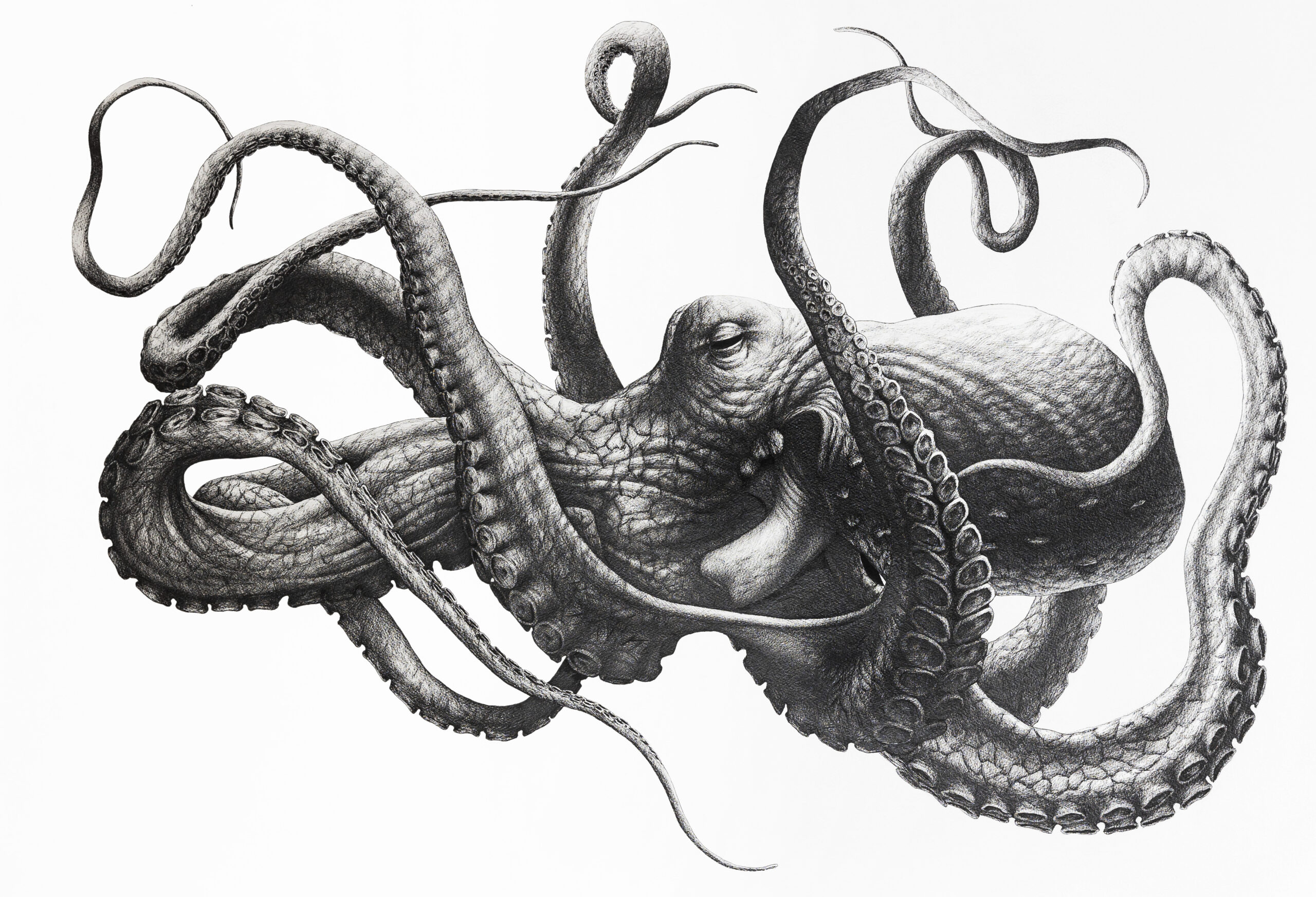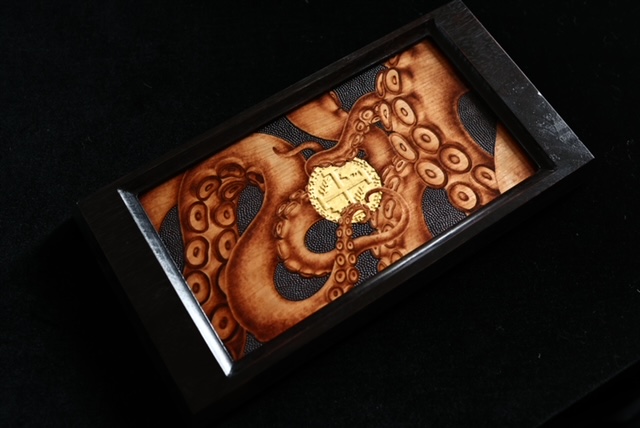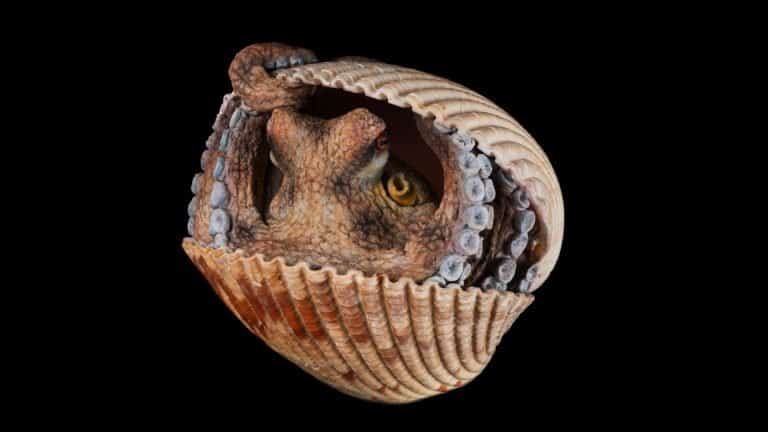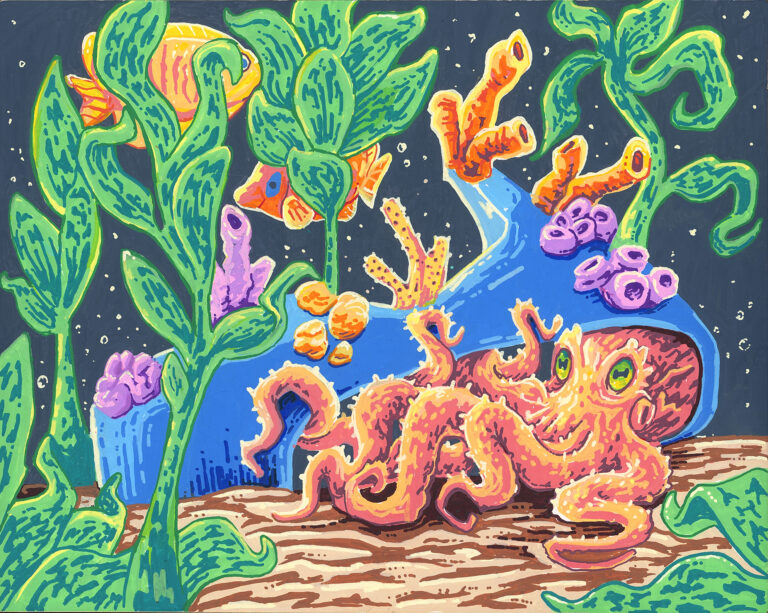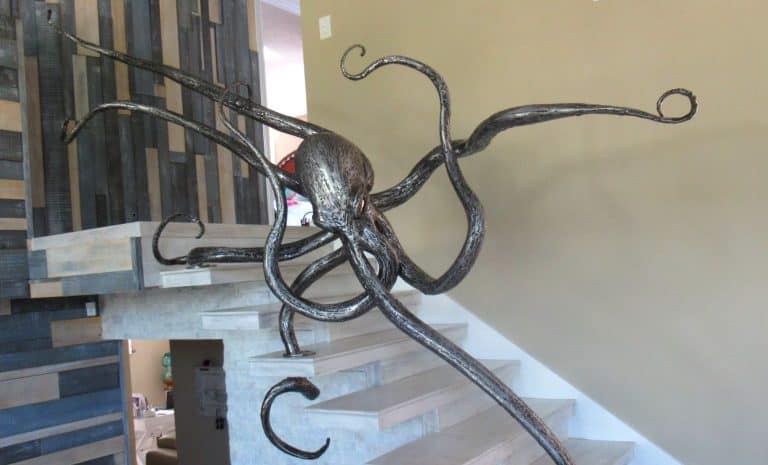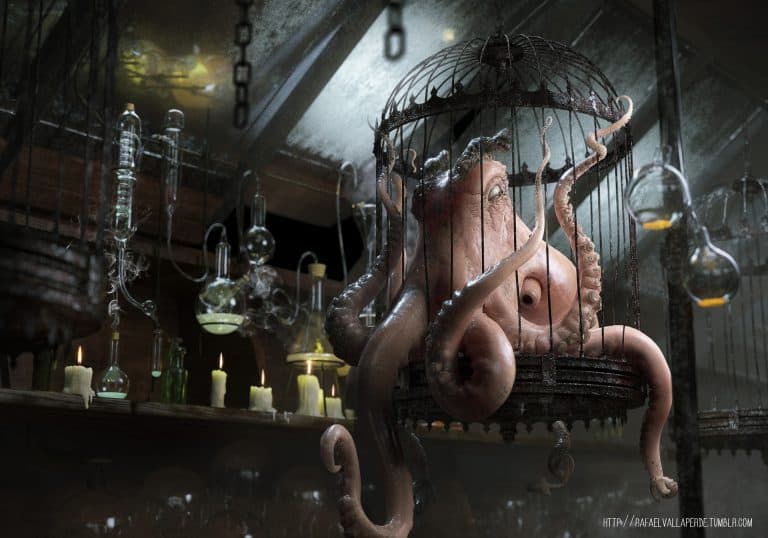‘Artist Spotlight’ Of The Week: James Rocke
Howdy Nation! In today’s post, we are going to be featuring our ‘Artist Spotlight’ of the week: James Rocke. With a white sketchbook and a simple micro pen, James has been able to add dimension, texture, and distinct features that have helped bring animals to life. All on a piece of paper! Let’s take a closer look at his process for creating his octopus art.
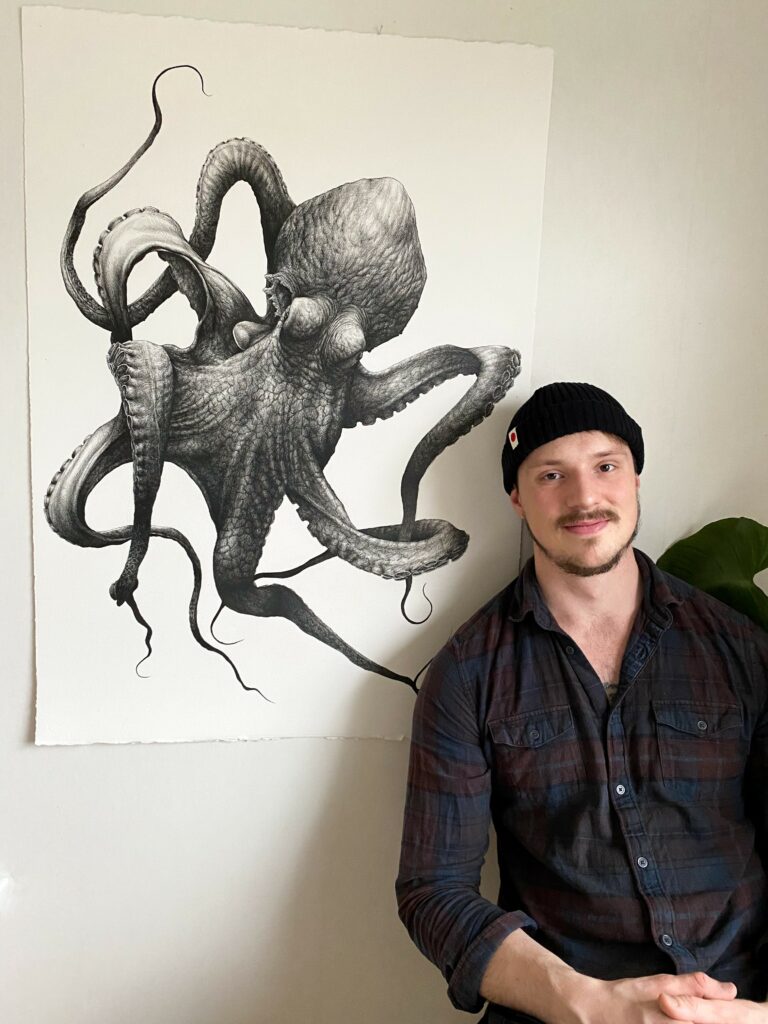
Meet James!
Born in the UK and then raised in France, James joined the military when he was 16! During his time in the forces, he developed a keen interest in drawing. Since he was often deployed overseas, he was able to develop his drawing skills by always having a sketchbook handy.
He left the military in 2019 and moved to Sweden, where he now resides with his wife!
He wanted to draw something that was really going to challenge him. The military has engraved into his mind that everything he does needs to push him out of his comfort zone. The octopus seemed like the perfect subject as it had such a complex and interesting form, the large surface for the drawings was to ensure that every detail was included.
And that is how Cepalopoda I and Cephalopoda II came to be!

What draws you in or fascinates you the most about octopuses? When did this start for you?
“When drawing the fur of a tiger or the scales of a snake, there is a repetition in the pattern. It’s a sort of hack that once you’ve figured out how to draw a hair or a scale, you can continue that same pattern for the rest of the coat.
However, the skin of an octopus is much more complex! The repetition is replaced by unpredictability, meaning that a lot more attention needs to be paid towards its depiction.
Not only must the skin appear rough to the touch, the overall form needs to convey a fluid and flexible creature. A balance between the two needs to be found in order to depict the octopus correctly. A task that kept my eyes on the drawing board for many hours!”
OctoNation members love knowing how long your work takes you to complete… Can you describe the process?
“Each drawing takes me between 150 to 200 hours to complete. A lot of the time!
The initial idea for a drawing changes drastically throughout the creative process, as the more I draw, the more I understand where I want to draw in the viewers attention. That might be the octopus’s mantle, its eyes or the octopus arms.”
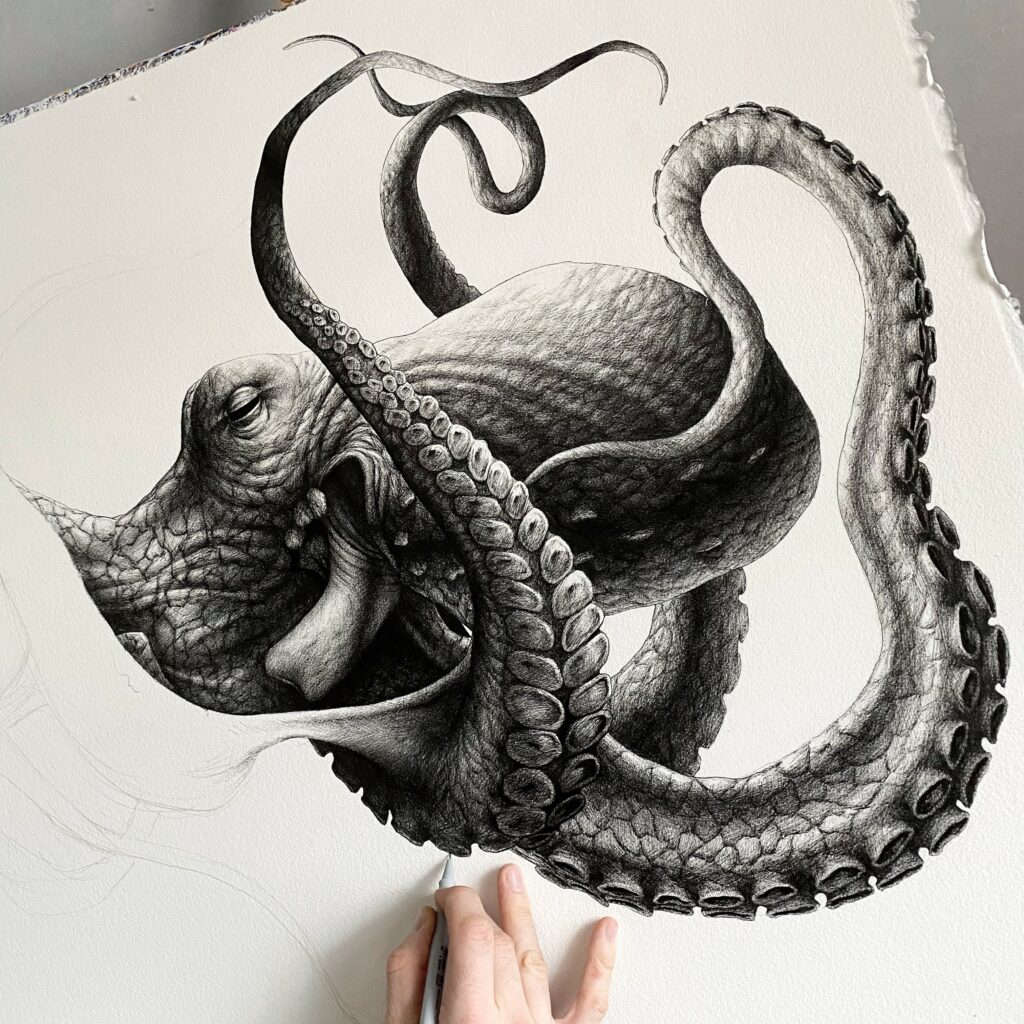
Was this modeled after a specific octopus species? Did you use any references?
“These drawings aren’t modelled after a specific octopus species, but rather my idea of what an octopus looks like. I use a number of references for each drawing.
If I find the mantle interesting in one photo, I might combine it with octopus arms from another and how the light and shadows are represented from another.”
What materials were used?
“I use around 20 0.3 micron pens by Faber Castell for each drawing.”
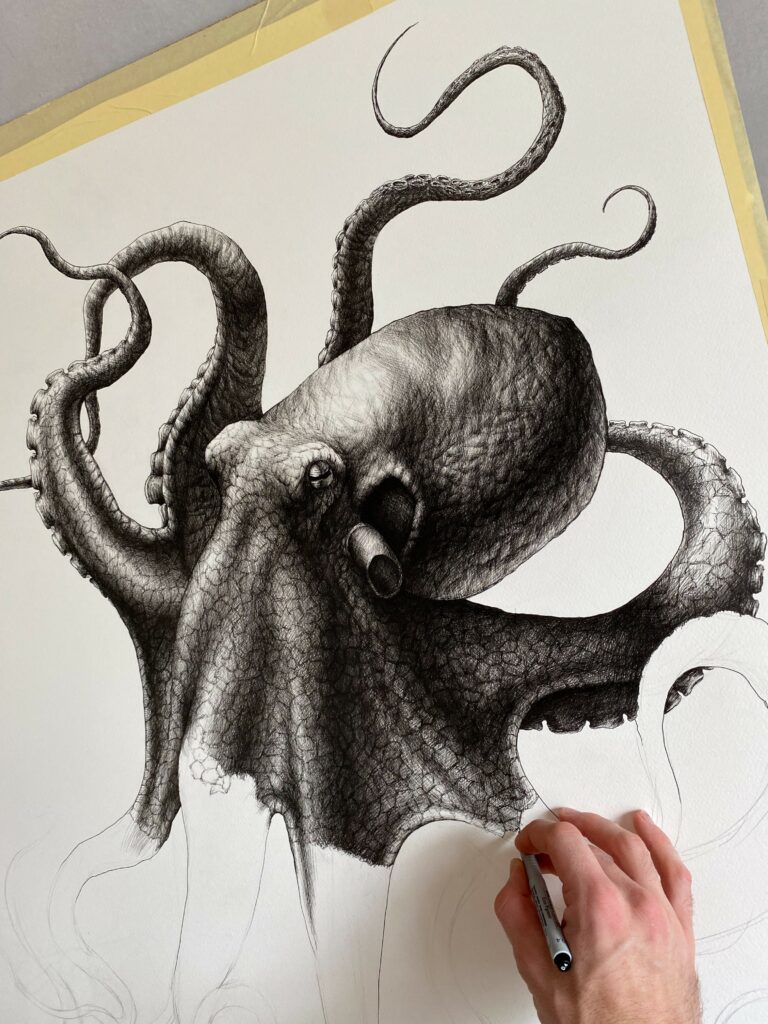
Who (or what) are your biggest influences?
“My biggest influence is Steve Huston! The manner in which he depicts light and shadow in his work is awe-inspiring. I have tried to apply the same principles to my work as I believe it gives the subject a larger-than-life feel to it.”
When do you feel the most creative?
“I am a night owl. So, when the sun is down and the coffee is flowing, I am at my most creative!”
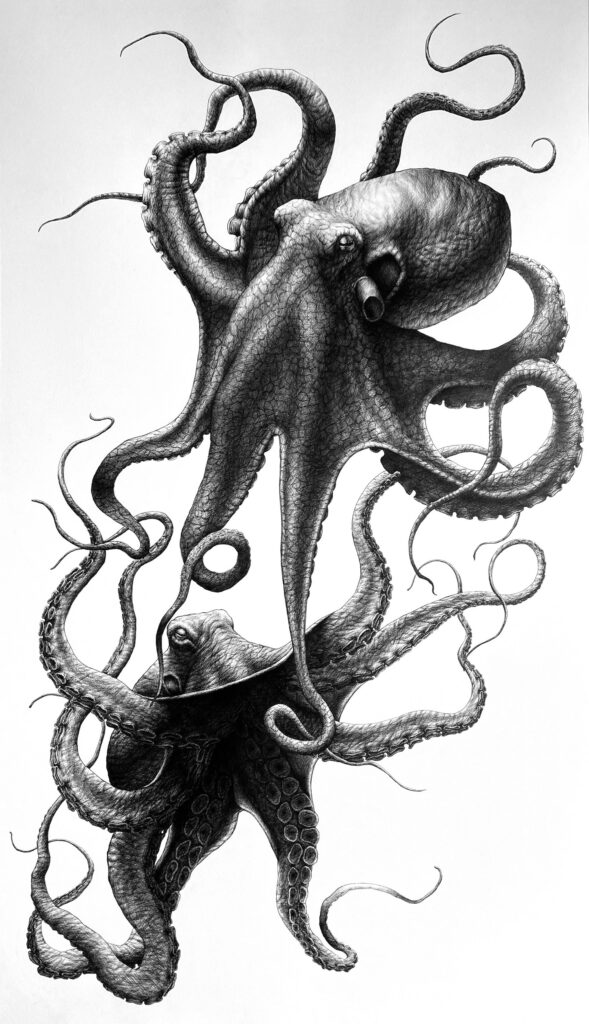
How do you know when a piece is finished?
“I have to remind myself to put the pen down sometimes and view the drawing from a different perspective. Usually I spend a day or two away from it, so that when I return I can view the drawing with a set of fresh eyes.
If I feel that the drawing conveys the idea that I wanted to communicate, then I’ll consider it finished.”
What’s the best website for people to discover your work?
“I actually post all of my work on my Instagram account!”
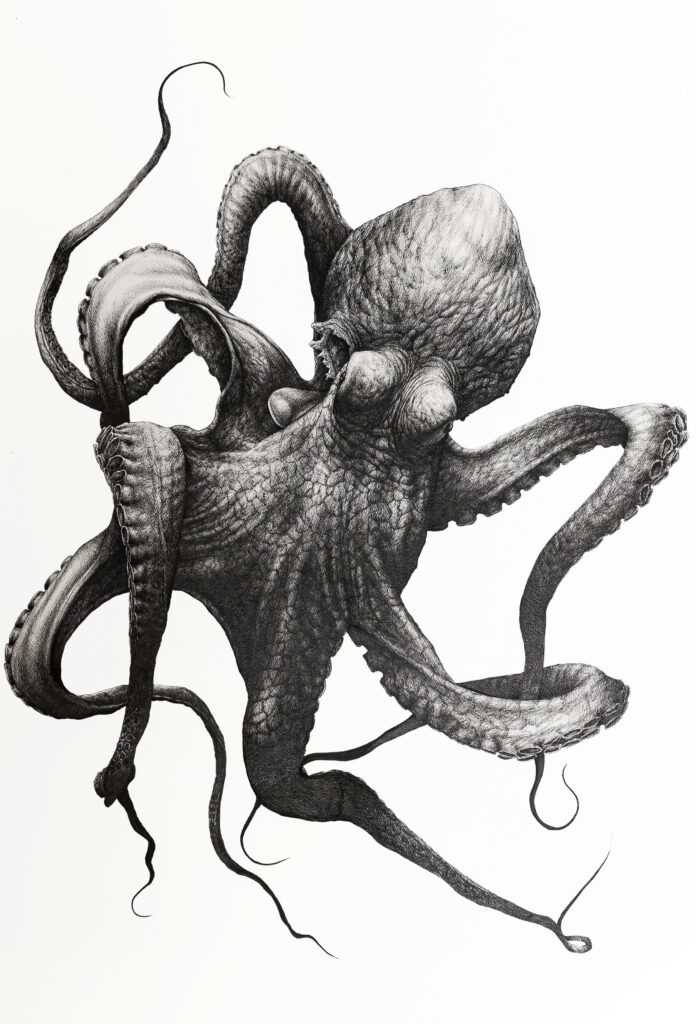
Do you have an artist statement?
“My work focuses on depicting the weird and wonderful creatures that share this beautiful planet with us. Being a self-taught artist, my style of drawing has emerged from countless hours spent hunched over the drawing board. I approach drawing as you would a series of problems, with every minor detail being brought into consideration.
My drawings are made using 0.3-micron pens, working on large scale sheets of textured watercolour paper. Furthermore, I use a variety of cross-hatching techniques to add depth and gave life to my subjects, with each piece taking around 200 hours to complete!”

Thank You For Joining Us For Artist Spotlight!
First, we want to give a big thank you to James for allowing us to showcase this beautiful artwork on OctoNation. To continue supporting James and his drawings, make sure to follow them on Instagram @james.rocke.art.
If you have any interest in commissioning a piece from them, DM him on Instagram!
If you want to educate yourself some more about all sorts of different cephalopods, take a look at our encyclopedia. Or, what we call it, our Octopedia!
Connect with other octopus lovers via the OctoNation Facebook group, OctopusFanClub.com! Make sure to follow us on Facebook and Instagram to keep up to date with the conservation, education, and ongoing research of cephalopods.
More Artist Spotlights To Read:

Vee is the blog manager here at OctoNation. Her love and knowledge for all things cephalopods has grown immensely since joining the OctoNation team- and continues to grow daily!
Vee uses her skills of writing, editing, and brainstorming to help create fun, yet educational posts about cephalopods- Something everyone can read and enjoy! As someone who spent the better part of her childhood near the ocean in Miami, Florida, she grew up learning to appreciate all sea life. Her love for the sea inspired her to do something daring- she dyed her hair blue!
